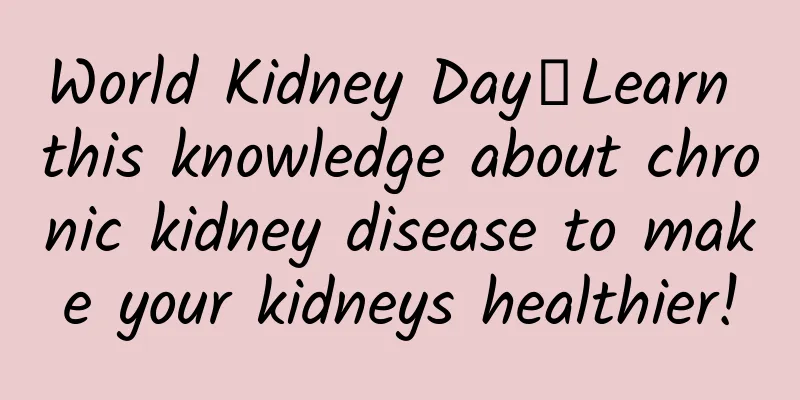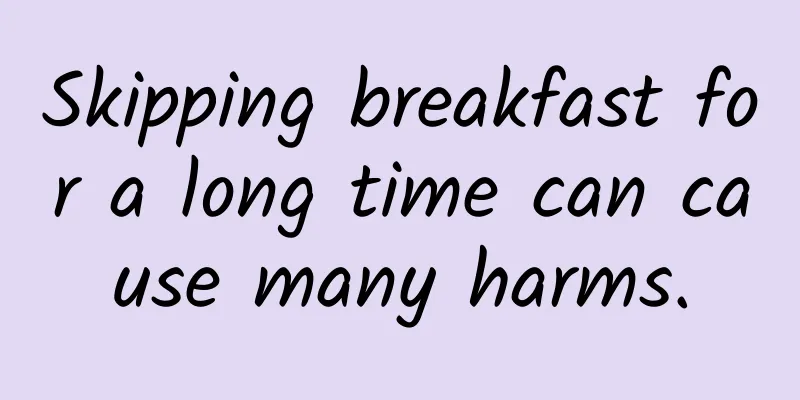World Kidney Day丨Learn this knowledge about chronic kidney disease to make your kidneys healthier!

|
March 13, 2025 is the 20th World Kidney Day, with the theme "How are your kidneys? Check early to stay healthy." The kidney, an important organ that acts like a precision filter, is responsible for filtering blood and excreting waste and excess water. However, acute kidney injury is like a sudden "storm" that disrupts the normal functioning of the kidney. What is even more worrying is that if acute kidney injury is not properly treated, it may cause the kidneys to become chronic and gradually lose their function. A multi-center survey in my country showed that about 50% of patients with acute kidney injury eventually develop chronic kidney disease, significantly increasing the risk of cardiovascular events and death. On the occasion of the 20th World Kidney Day, we invited Duan Shaobin, first-level chief physician of internal medicine at the Second Xiangya Hospital of Central South University and deputy director of the Hunan Key Laboratory of Kidney Diseases and Blood Purification, to talk about how to seize the initiative in the "battle to protect the kidneys." Understanding acute kidney injury - your kidneys may be more "fragile" than you thinkA 67-year-old woman named Zhang developed facial and leg edema after catching a cold. She was diagnosed with a blood creatinine level of more than 100 μmol/L at a local hospital, but she did not take it seriously at the time. Later, the edema symptoms gradually worsened, and she began to take Chinese medicine decoctions on her own for 2 days, followed by nausea and vomiting. When the patient was re-examined more than a month later, his blood creatinine soared to 736.6 μmol/L, and a renal biopsy confirmed acute kidney injury after hospitalization. Although he was discharged from the hospital after emergency hemodialysis treatment and his general condition improved, follow-up showed that the patient had developed chronic renal failure and continued dialysis treatment. From acute injury to the "collapse" of renal failure, Grandma Zhang's kidneys suffered four blows: the immune storm induced by viral infection, the "adding insult to injury" of nephrotoxic Chinese medicine, delayed medical treatment and missed golden treatment, and the "quiet start" of chronicity. It can be seen that acute kidney injury is never a "one-time crisis". Every increase in blood creatinine, every suspicious drug, and every delay in treatment are paving the way for chronic kidney disease. Remember: one day earlier, one more chance of survival - this is the true meaning of the "World Kidney Day" call for "early examination, health preservation". Duan Shaobin said that the kidney is like a "smart filter" that runs 24 hours a day. When it encounters dehydration, infection, drug toxicity, surgery, etc., this sophisticated system may collapse within 48 hours, resulting in a sudden decrease in urine volume, darker urine color like strong tea, and swelling of the face and legs. Combined with the results of renal function tests, the occurrence of acute kidney injury can be known. The occurrence of acute kidney injury is equivalent to the sudden blockage of the "filter". If it is not handled properly, local ischemia and hypoxia will lead to necrosis of renal tubular epithelial cells, activate fibroblasts to transform into "scar engineers", and induce interstitial fibrosis. Therefore, once acute kidney injury occurs, we must be vigilant and actively prevent acute kidney injury from progressing to chronic kidney disease. After acute kidney injury, these signs indicate a chronic kidney disease crisisDuan Shaobin introduced that we should learn to identify the signals indicating the crisis of chronic kidney disease, such as the continuously rising "toxin alarm" - after the clinical symptoms of acute kidney injury such as urine volume recovery and edema disappearance are relieved, the renal function indicators have not completely returned to the original level, or have an upward trend after repeated examinations; "Foam alarm" in urine - increased foam in urine that is difficult to dissipate (similar to beer foam) , urine routine shows urine protein ≥ 1+; Nocturnal “drainage abnormalities” – urinating ≥ 2 times at night; Blood pressure "creeps quietly" - blood pressure is continuously >140/90 mmHg, especially diastolic blood pressure increases significantly, and combined use of multiple antihypertensive drugs still does not control well; Systemic symptom alerts - pale complexion, palpitations with the slightest activity, profuse sweating, nausea and vomiting in the morning, loss of appetite, ammonia odor on breath, itchy skin, "urea frost" after scratching, bone pain; "Atrophy alarm" under ultrasound - color ultrasound shows that the kidney size has shrunk, the renal cortex has become thinner, and the renal echo has increased. Preventing chronic kidney disease - don't let acute damage become a "lifelong burden"Duan Shaobin said that protecting kidneys is a race against time. As called for on this year's World Kidney Day, early detection is not an option, but a solemn commitment to life. Early detection and early intervention can keep kidneys away from "silent collapse". Specifically, there are the following prevention methods: 1. Early risk assessment and early prediction: Use the existing risk prediction model for acute kidney injury to chronic kidney disease, as well as the risk prediction model for acute kidney disease after acute kidney injury and end-stage renal disease and death after acute kidney disease in hospitalized patients. Early screening and identification of high-risk groups for renal chronicity after acute kidney injury, early warning and intervention. 2. Timely treatment to stop the damage to the kidneys: Early treatment is the key to reversing acute kidney injury. Through active etiology investigation and targeted treatment, we can avoid secondary attacks such as infection, dehydration, and nephrotoxic drugs, and save the damaged kidneys. 3. Control the underlying diseases and eliminate hidden dangers for the kidneys: Actively control blood sugar and blood pressure levels, manage cardiovascular comorbidities, etc. 4. Diet adjustment can reduce the burden on the kidneys: During acute kidney injury, pay attention to salt restriction and potassium control, less protein, better protein, and daily energy intake of 20-30 kcal/kg. 5. Adjust your lifestyle to “recharge” your kidneys: Ensure sleep, exercise appropriately, quit smoking and limit alcohol, avoid fatigue, and prevent colds. 6. Rational application of renal replacement therapy: Severe acute kidney injury (such as hyperkalemia, acidosis, and volume overload) requires prompt hemodialysis or continuous renal replacement therapy. 7. Exploration of anti-renal fibrosis treatment methods: Renal protective drugs that have been marketed, such as renin angiotensin aldosterone inhibitors (prils, sartans), have a certain effect in preventing renal fibrosis in patients with underlying diseases such as hypertension, diabetes, chronic kidney disease, etc. who suffer from acute kidney injury. However, it is necessary to determine whether to use and the dosage based on the basic renal function level under the guidance of a physician, and pay attention to monitoring blood creatinine, blood potassium, and blood sodium. New anti-fibrosis drugs that are currently in clinical trials include pirfenidone, meflunisal, etc. Human umbilical cord blood mononuclear cells and stem cells have a certain preventive and therapeutic effect on renal fibrosis after acute kidney injury in animal experiments, but have not yet been applied in clinical practice. 8. Review and follow-up to protect kidneys: For people at high risk of acute kidney injury progressing to chronic kidney disease, regular follow-up is conducted, and reexamination of urine sediment, urine albumin/urine creatinine, blood routine, renal function, and urinary system color Doppler ultrasound is recommended.
(Edited by ZS) |
>>: Protect your bones! ——Scientific exercise delays osteoporosis
Recommend
How to speed up menstruation
Women have their periods every month, and they wi...
What fertilizer is best for black pine? What should be paid attention to when fertilizing black pine?
Black pine is a common plant in life, and is love...
For the year-end physical examination, these niche additional examinations are highly recommended!
Audit expert: Wu Xinsheng Deputy Chief Physician,...
What happens if women have no sex for a long time?
Sexual life is not unfamiliar to adults. It is a ...
What are the symptoms of pregnancy?
There are huge changes in women after pregnancy. ...
Changes in sexual desire before and after menstruation
Menstruation is something that every woman has to...
What causes placenta accreta?
Placenta accreta refers to the situation where al...
Exercise is good for health! Which is the best exercise, "aerobic" or "anaerobic"?
When it comes to sports, some people like brisk w...
How to recover faster after childbirth
How to recover faster after childbirth, scientifi...
What will happen if the medicine does not clear the uterus?
Medical abortion is a common method of terminatin...
Symptoms of stomach pain one week after conception?
Sexual life is an intimate activity for lovers to...
When is the best time to do fallopian tube insufflation?
The main reason why women have difficulty getting...
App Annie: Global app downloads reached nearly 26 billion times in Q3 2017, with revenue reaching $17 billion
According to the latest report from app market re...
Will sugar disrupt the balance of intestinal flora, affect immunity and increase the risk of metabolic diseases?
Everyone already knows that a high-sugar, high-fa...
Hypertension symptoms vary. Early prevention and treatment are important.
Hypertension is a chronic disease that everyone i...









